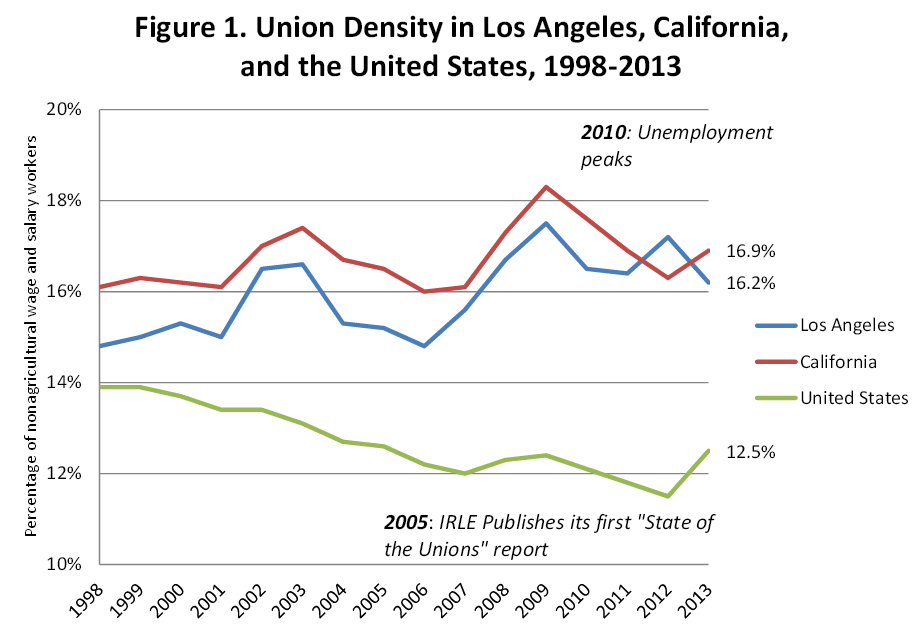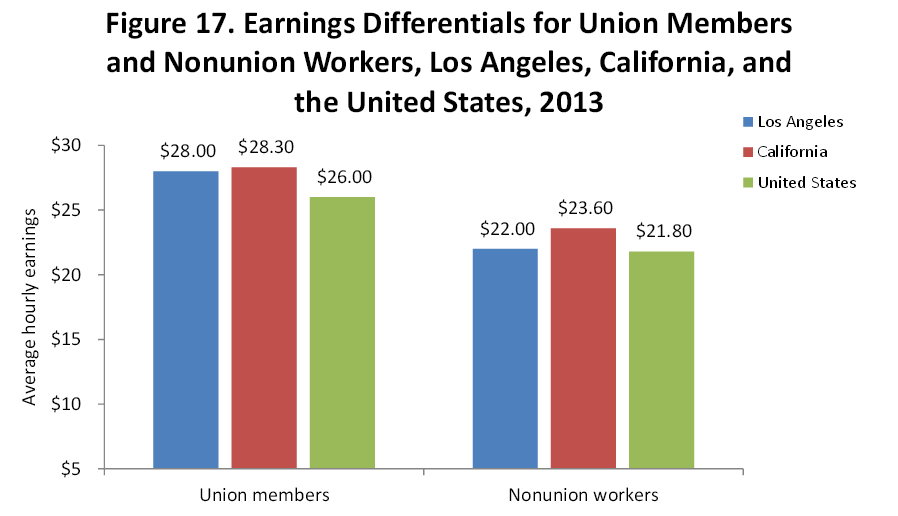September 10, 2013
UCLA’s Institute for Research on Labor and Employment (IRLE) has published its latest annual report on union membership in the city of Los Angeles, the state of California, and the United States as a whole. Some of their results, covering trends from 2005 through 2013, might surprise you.
As the economy continues to struggle, unionization rates have managed to hold their own or even improve somewhat relative to the situation before the recession. In 2005 and again in 2013, 12.5 percent of US workers were union members. Between the same two years, Los Angeles and California saw small increases in unionization rates; from 16.5 percent to 16.9 percent in California, and from 15.5 percent to 16.2 percent in Los Angeles.

Source: IRLE’s State of the Unions in 2013
The relatively steady unionization rates over the last eight years, however, mask some important changes in the demographic makeup of unions. Following trends in the labor force as a whole, unions have become more feminized, better educated, more ethnically diverse, and older than they were in 2005. African Americans continue to hold the highest rates of unionization in Los Angeles, in California, and nationally. While recent immigrants are still underrepresented by unions, between 2005 and 2013, naturalized immigrants saw a dramatic increase in membership, from 14.9 percent to 18.7 percent. Longer residency in the United States improves the likelihood of union membership for immigrants, suggesting that economic institutions become more accessible to immigrants over time.
While unions have thrived in some industries, they have declined in others. Unionization rates in in manufacturing, a traditional stronghold for organized labor, have decreased from 13.0 percent to 10.5 percent over the last eight years. Industries such as transportation and utilities, agriculture, and construction have also seen falls in union rates across the nation. In Los Angeles and in California, the entertainment industry experienced a rapid drop in unionization, decreasing by more than half since 2005, compared with a drop of 2 percentage points in the United States as a whole.
One relative bright spot for unions was in the public sector, where membership in 2013 was slightly higher than it was in 2005.
The report also emphasizes that it still pays to be in a union. Union members in California and the United States as a whole earn about 20 percent more than their nonunion counterparts. The advantage is even higher in Los Angeles where union workers earn 27 percent higher wages. However, the paper notes that the earnings impact of unions has decreased slightly since 2005.

Source: IRLE’s State of the Unions in 2013
For a review of earlier trends, covering the period 1983-2008, see CEPR’s “Changing Face of Labor” report released in 2009.






